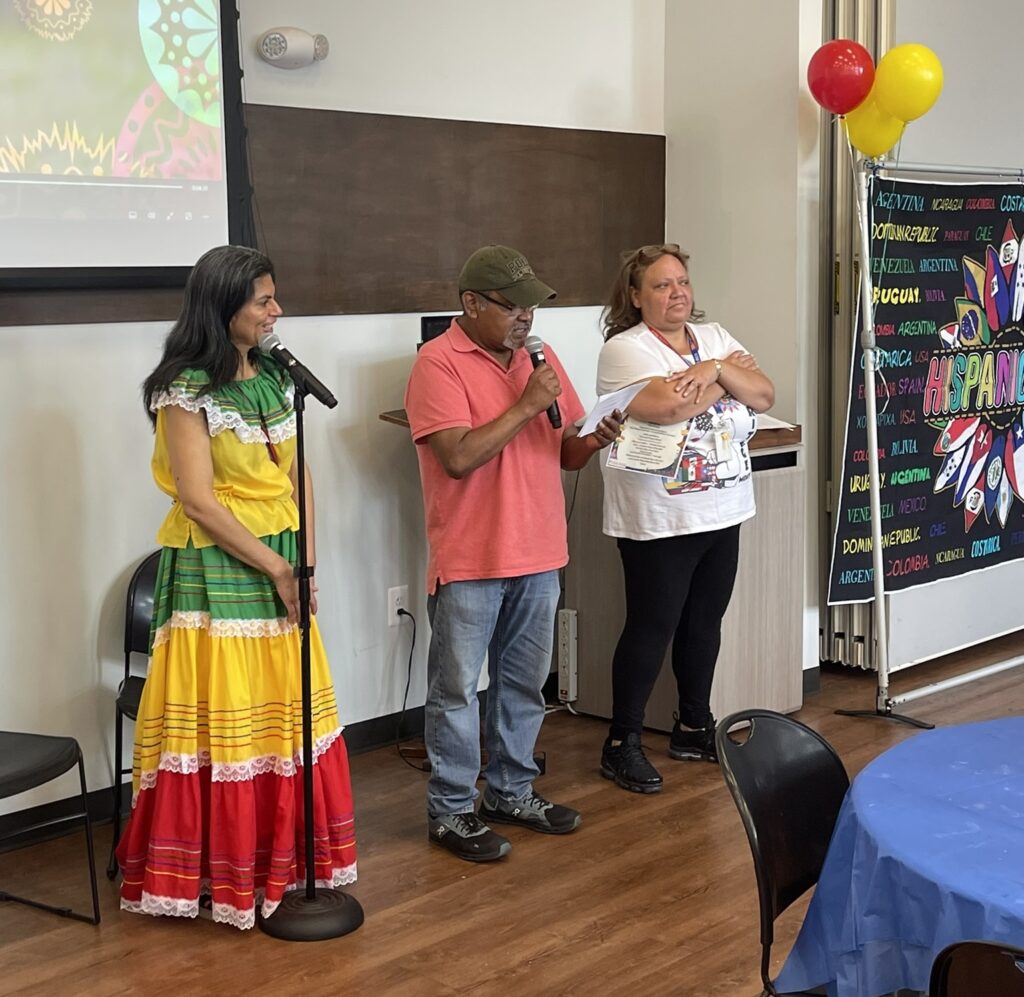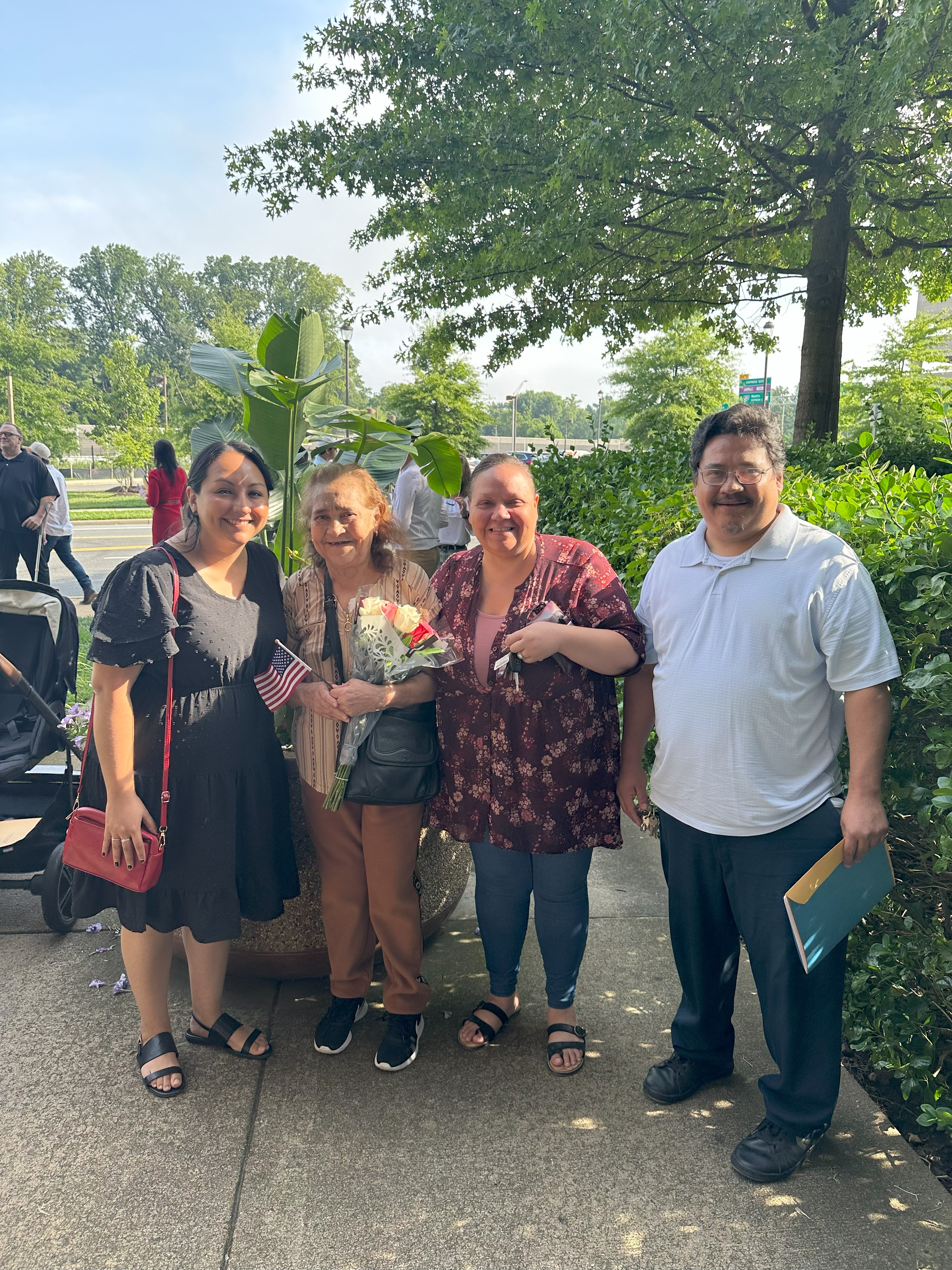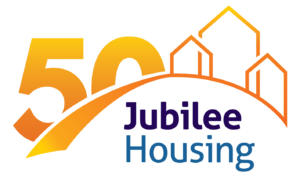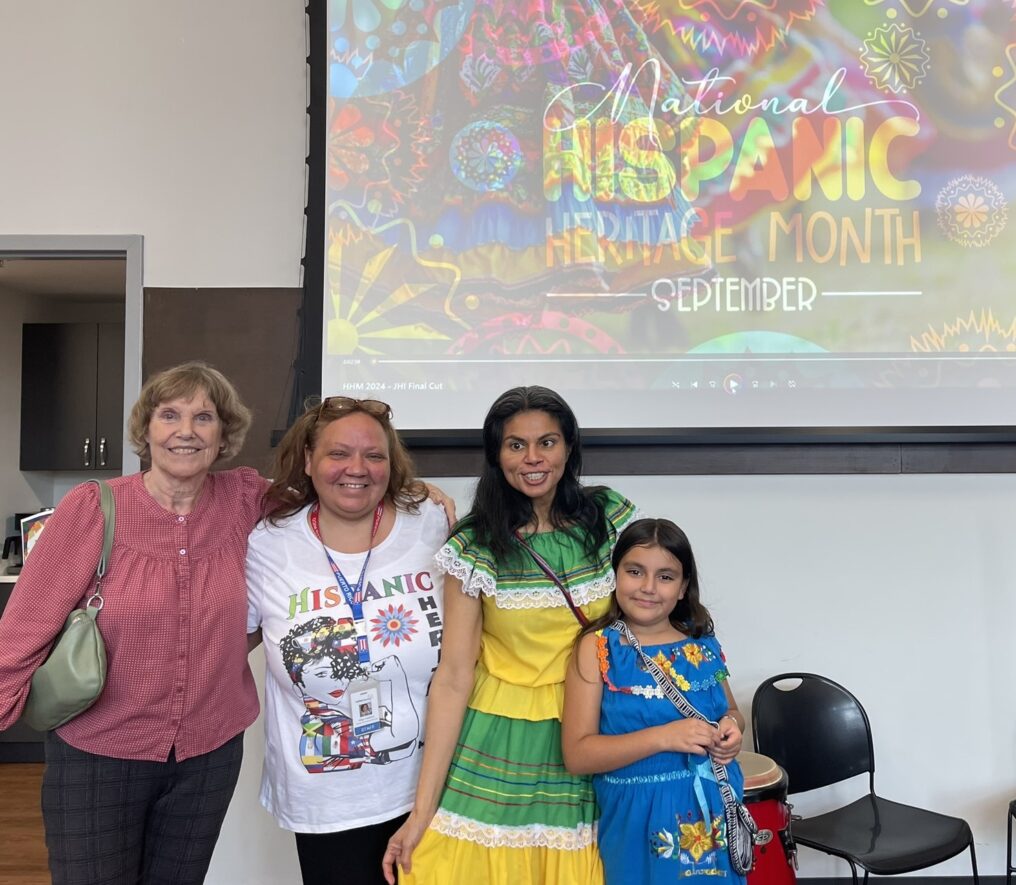For over 50 years, Jubilee Housing has been committed to creating equitable communities where people of all backgrounds can thrive. As we celebrate National Hispanic Heritage Month, we reaffirm our dedication to fostering inclusivity and uplifting the vibrant Hispanic community that has played such an integral role in shaping Adams Morgan, Mount Pleasant, and Columbia Heights.
This month, we celebrate the contributions of our Hispanic residents and partners, highlighting their stories, achievements, and the deep cultural pride that enriches our community. Through events, resident engagement, and continued support, we are honored to stand with the Hispanic community in building a more just and inclusive future for all.
50th Anniversary Stories
How Jubilee Housing Embraces Hispanic Heritage Month and Supports the Hispanic Community
Adams Morgan and the surrounding communities of Mount Pleasant and Columbia Heights have historically served as the heart of the Hispanic community, now extending throughout the region. The Hispanic community has played a transformative role in shaping Ward 1, with some of Washington, D.C.’s most vibrant and culturally diverse neighborhoods. Jubilee Housing has grown and changed as the community has.
In the 1910s, the area around 16th Street began attracting Mexican, Ecuadoran, Cuban, and Spanish diplomats, whose embassies were located nearby. Many of these Spanish-speaking diplomats and their families settled in the neighborhood, often staying even after their official terms ended. By the 1950s, political instability and economic struggles in Puerto Rico, Cuba, and later Central and South American countries—especially El Salvador and Nicaragua—drew more Latino immigrants to the area.
Latino communities grew, rich in culture and supported by shared language and cuisine. By the 1970s, local landmarks like the Ontario Theater featured Spanish-language films (and later hosted U2), while Manuel’s Latino disco became a popular nightlife destination. Restaurants like Omega and small grocery stores such as La Sevillana and El Gavilan thrived, offering familiar foods and spaces for conversation.
This influence began in the 1960s and 1970s, when waves of immigrants from Latin America, particularly from countries like El Salvador, Guatemala, and Nicaragua, moved to the area. Many were fleeing political instability, economic hardship, or civil conflict in their home countries, seeking safety and new opportunities in the United States. Latino communities grew, rich in culture and supported by shared language and cuisine.
At that time, Adams Morgan was a neighborhood becoming more known for its diverse residents, and the influx of Hispanic immigrants added a new cultural richness to the area. The community soon became integral to the local economy, with Hispanic-owned businesses—restaurants, markets, and service shops—emerging and flourishing along Columbia Road and 18th Street. These businesses not only brought Latin America’s distinct flavors and cultural traditions to Adams Morgan, Mount Pleasant, and Columbia Heights but also fostered a sense of community and belonging for newcomers. Barbara Moore, co-founder of Jubilee, reflects on the Jubilee community during its early years: “I’ve always been passionate about bringing together a diverse mix of people. One of my calls has been to encourage understanding, appreciation, and welcoming of those from different races and backgrounds. I believe we’ve done a pretty good job of that at Jubilee with the Latino communities and other communities.”
As the population grew, so did the community’s impact on the area’s social fabric. Hispanic residents helped establish cultural and community organizations that provided services, education, and support for immigrant families. Churches, advocacy groups, and nonprofits played a crucial role in helping families navigate the challenges of adjusting to life in the U.S. while offering resources like language classes, housing assistance, and legal aid.
The Salvadoran civil war in the 1980s brought even more immigrants to the area, cementing the Adams Morgan area as a hub for Hispanic life in Washington, D.C. These neighborhoods became known for activism, with both local and immigrant-led groups advocating for workers’ rights, tenant protections, and fair immigration policies. The struggles and victories of the Hispanic community in our community reflected larger movements across the country for immigrant rights and social justice.
Today, the influence of the Hispanic community is visible in many ways—from the festivals and cultural celebrations that draw thousands to the area each year to the continued presence of Hispanic-owned businesses. The community’s contributions are woven into the very identity of the Adams Morgan area, helping maintain its reputation as a vibrant, inclusive, and culturally rich neighborhood. Yet, even with this deep history, challenges remain. The community continues to face issues such as affordable housing, language barriers, and access to services, making the work of organizations like Jubilee Housing crucial in supporting and uplifting the neighborhood’s Hispanic residents. In a Q&A with Miya Morris, Jubilee Housing’s Director of Resident Services, Miya explores how Jubilee Housing supports, works with and celebrates the Hispanic community in Ward 1.
Can you share a bit about yourself and your role as Director of Resident Services at Jubilee Housing?
I have been the Director of Resident Services at Jubilee Housing for a little over three years. My work here has aligned well with my previous experience, which includes roles as a therapist, medical-assisted case manager, and provider of evidence-based in-home services. In terms of education, I hold bachelor’s degrees in social work and psychology and a master’s degree in counselor education with a focus on community mental health.
My personal heritage and background as a first-generation Puerto Rican have made my time at Jubilee Housing particularly fulfilling. I have had the chance to utilize my Spanish language skills more frequently here than in previous positions, which has greatly improved my Spanish literacy and communication skills. The significant Latino population at Jubilee Housing has allowed me to use my Spanish every day, enhancing both my professional skills and personal satisfaction.
Our Resident Services team includes myself and four service coordinators. Our approach focuses on four central areas: housing stabilization, fostering a sense of community, addressing health disparities, and providing financial mobility opportunities. These priorities guide the varied services we offer to our residents.
What are some of the most pressing needs or challenges currently faced by Hispanic residents in the Jubilee Housing community, and how is Jubilee Housing Resident Services working to address these needs?
It’s unfortunate that, despite the awareness of the large number of monolingual Spanish-speaking individuals in Ward 1, services often fail to address language justice and accessibility.
We’re working to address those needs by creating positions for bilingual staff as part of our staffing plan, which became mandatory to truly be able to provide robust services. The other thing is that when we added on the TOPA [Tenant Opportunity to Purchase Act] properties, we wound up “inheriting” buildings around 80% monolingual Spanish-speaking. So, we had to find a way to make our services accessible and useful. We created a satellite office for resident services in our Richmond Towers building, so we have a second office there. We had to make sure that we had a Spanish-speaking staff to operate that office, and we realized we needed to be adaptable to residents, not always expecting residents to adapt to us. When we see needs, they go beyond providing bilingual flyers or having bilingual interpreters for events. It’s about making ourselves accessible to the majority of those who need us. If you’re going to have three buildings that are 80% monolingual Spanish-speaking, it’s not fair to expect all those residents in Mount Pleasant to come all the way to the Ritz without knowing when there will be a Spanish-speaking staff available. Those residents, who have never had resident services, now feel like they’ve gained resources that didn’t exist before. In the office, we’ve held family fun nights on a monthly basis among other events.
Being in touch with who we’re serving and adapting the way we provide that service has allowed us to connect with residents and make them feel included. We’ve even been intentional about ensuring Spanish-speaking residents attend focus groups and that there are interpreters available, with invitations in their language. We’ve defended these efforts with English-speaking residents who were frustrated by the time it takes to allow for interpretation, stressing that everyone deserves access to information in the language they speak. Interestingly, English-speaking neighbors have shared how attending bilingual workshops has made them more connected with their Spanish-speaking neighbors. This inclusion has fostered growth and neighborly relationships, showing the positive impact of ensuring inclusivity. Overall, being willing to adapt to our community, being responsive, and showing that we are knowledgeable about the people we’re serving has been one of the ways we’ve successfully responded.
Are there any specific programs or initiatives that you’re particularly proud of that have had a meaningful impact on the Hispanic residents?
The Hispanic Heritage Month event is a great example of how we’ve grown to empower residents as leaders. In fact, the committee for the event was composed of myself, one of my staff members, and the rest, who were entirely residents. Our entire program for the event was nearly completely resident-led. The presenters and poets were residents. For the menu, the residents were involved in all the planning.

By going beyond simply attending and allowing residents to lead, we’re creating real opportunities for them to be change agents. This is what happens when we open doors and build bridges to true inclusivity. We allow residents to take the lead role on how they want to celebrate themselves, their community and their culture as pillars of this community.
How does Jubilee Housing partner with other organizations or local leaders to better serve the Hispanic community?
I think the first point is ensuring community-wide feedback is inclusive when we notice something that requires it. The second point involves identifying counterpart organizations that are most equipped to serve the Hispanic and Latino communities and understanding which resources are well-suited and which are not. Additionally, we work on bridging resources and the community by hosting workshops and family fun nights, where we bring resources on-site. We’re not just pointing residents to a resource and hoping it helps; we bring the resources directly to them, introducing them to residents and facilitating direct connections. This approach increases the likelihood that residents will benefit from the resources because they receive introductions in a familiar and comfortable space, often including a meal, and leveraging the trust they have in us to connect them with community partners. This approach adds another layer of support because we’re not just providing access through knowledge; we’re also making resources directly accessible in the residents’ safe spaces.
Can you share one of your favorite moments?
You know, when you work with families, you get to play different roles and witness special moments for them. One of my most favorite moments since I’ve been here involved a senior resident, I believe she’s in her 80s. We attended her citizenship swearing-in ceremony on a Saturday, and it was such an honor to see how meaningful that was for her. It was just her and her son, and the fact that me and my staff were there made her so excited. We brought her flowers, took pictures, and made a big celebration out of it. Being able to be present on the day she became an American citizen, after 40 years in this country, is something I’ll never forget.

My staff had helped her navigate the process, including paperwork and an interview at the embassy, where she required an interpreter. We don’t always go off-site, but we made an exception to support her. To be part of her becoming a citizen felt like such an accomplishment for us, too. I had never been to a swearing-in ceremony before, and it was moving to watch her raise her arm and hold her flag. Knowing that we played a role in helping her through this journey was heartwarming. She raised her children here in this community, and now, as she prepares to move back into 1460 Euclid after construction, it feels full circle. It reminded me of the privilege of citizenship, something I was born with, and how meaningful it is for those who have to earn it. We stood in line with immigrant families from all over the world, and being part of that day was one of my most memorable moments.
What does it mean to celebrate Hispanic Heritage Month?
As a nation, we need to do a better job of truly representing the American spirit of inclusion, cultural appreciation, and understand that this community has contributed for decades and is a part of the fabric of American history that isn’t widely known and isn’t widely understood. To truly have a path forward as a community, as a nation, we need to find a way to be better co-citizens of one another. That includes those born here and those that have come here in hopes of a better life and finding ways to be better neighbors collectively, which is an important path for us all.

